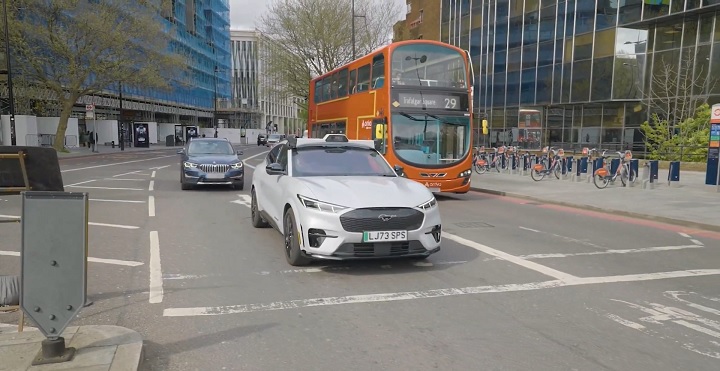
Image: DfT
The public and industry are being encouraged to help shape the future of self-driving vehicles, by sharing views on how to make them safe and accessible before the first services become available next year.
On 21 July, future of roads minister Lilian Greenwood launched a consultation on the automated passenger services (APS) permitting scheme and the draft statutory instrument, a key legal element of how taxi, private-hire and bus-like services of self-driving vehicles will be regulated once they hit roads in Great Britain.
The DfT says safety, innovation, world-leading regulation and accessibility will be at the forefront of the consultation – with the self-driving vehicles rollout aiming to help reduce human error, which contributes to 88% of all road collisions.
The consultation follows the recent government decision to fast-track pilots of self-driving passenger vehicles to Spring 2026, helping the industry to innovate and grow.
This will allow firms to pilot small-scale services without a safety driver for the first time – which could be available to members of the public to book via an app – before a potential wider rollout when the Automated Vehicles Act is implemented in full from the second half of 2027.
Through the consultation, representative groups, industry stakeholders, trade unions and members of the public will be able to make their views heard and influence future government policy over a variety of areas critical for self-driving vehicles to run safely and efficiently.
These include:
- how self-driving vehicles can be made as accessible as possible for disabled and older people
- how services of self-driving vehicles are approved by councils
- when a permit to operate a service should be varied, suspended or withdrawn
Lilian Greenwood, future of roads minister, said: “Self-driving vehicles are one of the most exciting opportunities to improve transport for so many people, especially those in rural areas or unable to drive.
“We want to work with passengers and industry to make this new form of transport safe and accessible, as we take our next steps towards adoption.
“This technology doesn’t just have the potential to improve transport for millions of people. It will help stimulate innovation, create thousands of jobs, and drive investment to put more money in people’s pockets.”
“…with the self-driving vehicles rollout aiming to help reduce human error, which contributes to 88% of all road collisions.” Yes, but what about the human errors which may be present during the programming and design of these vehicles? The vehicles themselves will only be as ‘safe’ as their systems allow them to be. Do the vehicles’ programmers and designers have perfect driving records when they themselves are behind the wheel of a car? Let’s hope any bad driving habits are not passed on to the self-driving cars.
Hugh Jones, South Wirral
+1